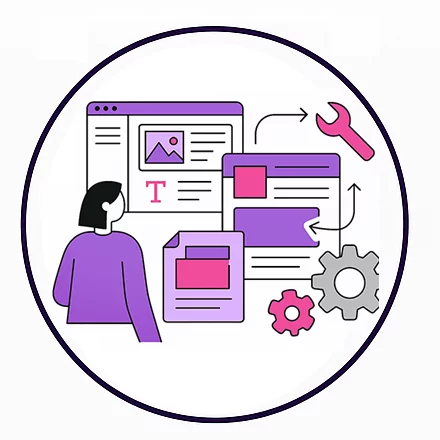B2B buyers in Charlotte’s industrial and manufacturing sectors don’t make snap decisions. They’re evaluating vendors, comparing specs, and looking for reliability. Your website is often the first interaction they have with your company, and if it doesn’t provide clarity, trust, and accessibility, you risk losing them before a conversation even begins.
That’s where industrial web design makes all the difference. It’s not about flashy visuals—it’s about functionality, credibility, and performance. In this article, we’ll cover what industrial buyers expect, how to design a site that meets their needs, and why SEO-driven design helps you stay visible in an increasingly competitive market.
B2B Industrial Web Design


Industrial buyers aren’t casual browsers. They are engineers, procurement managers, or executives searching for very specific information - dimensions, compliance standards, or lead times. A website that fails to deliver this quickly causes frustration and drop-offs.
What Makes Industrial Buyers Different
Unlike B2C shoppers, B2B buyers often:
- Spend weeks or months researching.
- Require technical specs, CAD files, or compliance documents.
- Need to trust the credibility of the manufacturer before initiating contact.
Your web design should reflect these priorities, ensuring every interaction moves buyers closer to confidence—and conversion.
Key Features for Industrial Websites


Industrial sites must make technical information easy to find. Product specification sheets, downloadable PDFs, and searchable catalogs provide the details buyers demand.
Trust Signals & Certifications
Certifications, compliance standards, and testimonials serve as validation points. Displaying ISO certifications or safety compliance logos builds confidence immediately.
Intuitive Navigation & Filter Tools
Buyers don’t want to click through 10 pages. Strong industrial web design includes filters by industry, product type, or spec requirements to help them find what they need quickly.
Structured Case Study or Portfolio Sections
Industrial buyers often want proof. Dedicated case study sections show how you’ve solved similar challenges for other businesses—helping prospects envision themselves as the next success story.
Mobile Responsiveness for On-the-Go Access
Over 67% of website traffic now comes from mobile. Industrial buyers often research in the field or on-site, so a mobile-friendly design isn’t optional—it’s essential.
Fast Load Times & Performance
Google research shows pages that load in under 2 seconds have a 9% bounce rate, compared to 38% for slower pages. For industrial buyers on tight schedules, every second counts.
Conversion-Driven Design Tactics


Generic forms don’t cut it. Tailored “Request a Quote” options tied to specific products or services ensure buyers can submit meaningful inquiries without friction.
Easy Content Downloads
Spec sheets, brochures, and technical whitepapers should be available with a single click—no confusing downloads or hidden pages.
Chat or Contact Paths for Rapid Response
Live chat or quick contact options give buyers instant access to your team. When industrial buyers are ready to talk, every delay risks losing them to a competitor.
Maintenance & Scalability


Industrial websites shouldn’t require developers for every small update. A CMS like WordPress or Drupal allows your team to update product listings and specs easily.
Modular Page Components for Expansion
As your company grows, modular site design allows for new product pages or service expansions without costly redesigns.
Your website is more than an online brochure - it’s a sales tool. For industrial and manufacturing companies in Charlotte, the right industrial web design can build trust, highlight your capabilities, and convert prospects into leads.
Whether it’s streamlining navigation, improving load speeds, or optimizing for local SEO, small improvements add up to major business gains. If your current site isn’t serving B2B buyers the way it should, now is the time for change.
Ready to align your website with your buyers’ needs?